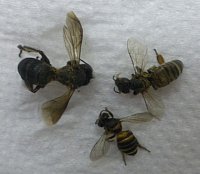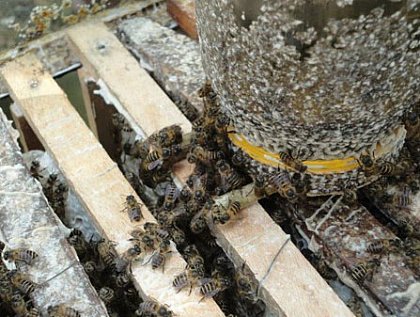LEGATO project

Due to their ecological and economical value, a broad variety of tools and techniques have been developed in honeybees, permitting to gain more and more knowledge on their biology. Nowadays, there are used as a model organism in a broad variety of field. However, most of these studies focus on the famous Western species, Apis mellifera. In Asia, nonetheless, about ten other species can be found, exhibiting a wide diversity of traits.

As a member of the LEGATO project , a first part of my work is focused on the study of Asian honeybees in intensive land use systems in Asia. The goal of this interdisciplinary project is to develop indicators to assess the crop production risks and opportunities arising from changes in land use intensity, socio-cultural conditions, biodiversity and climate change in intensive landscape management systems. Inferring the diversity and abundance of pollinator and pests' natural enemies (parasites, parasitoids and pathogens) in these systems will provide a better understanding on the ecosystem regulating services for pollination and biocontrol and help to develop efficient tools to first assess and then promote sustainable development (i.e.: through the way of ecological engineering). To achieve this goal, I am using molecular markers and population genetics tools to infer the nest densities, genetic diversity, population structure among a gradient of land-use intensity in South-East Asian agroecosystems. This work will give crucial insights on the impacts of intensive land use systems on the populations of these key pollinators.

Additionally, being especially interested in evolutionary parasitology and conservation of biodiversity, the second part of my project focuses on host-parasite interactions of native and imported honeybees in Asia. The constant import of Apis mellifera and its extensive use for more than a century in that continent offers exceptional condition to study the impact of this species on other native Apis. Many common pathogens infecting the Western honeybees have originated in Asia. Studying the defence mechanisms displayed by their natural hosts can therefore provide crucial knowledge on the co-evolution of honeybees and their pathogens and provide efficient management strategies for worldwide beekeeping. In that purpose, I aim at studying the resistance mechanisms of the Asian cavity nesting honeybees Apis cerana to one of the major Western species plague: the Varroa mite.

Although many cases of pathogens host switches from Asian to Western honeybees, it is still poorly known whether spillovers have occurred the other way round. However, more and more indications show that the major honeybees' pathogens possess a various range of hosts. Studying viruses and Nosema prevalence in managed and wild bee species, I am currently working on patterns of pathogen distribution in different Asian populations. This way, I aim to understand possible impact of Western honeybees' importation on the native bee species in South-East Asia



